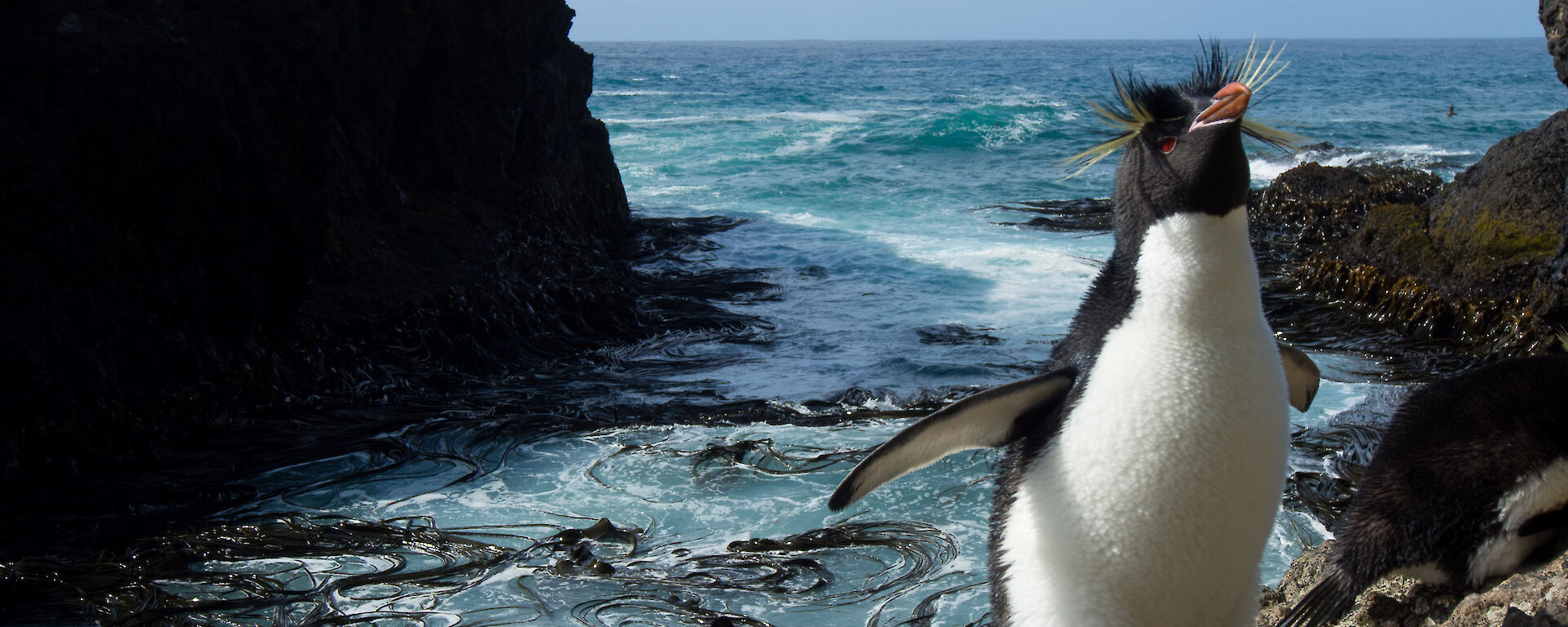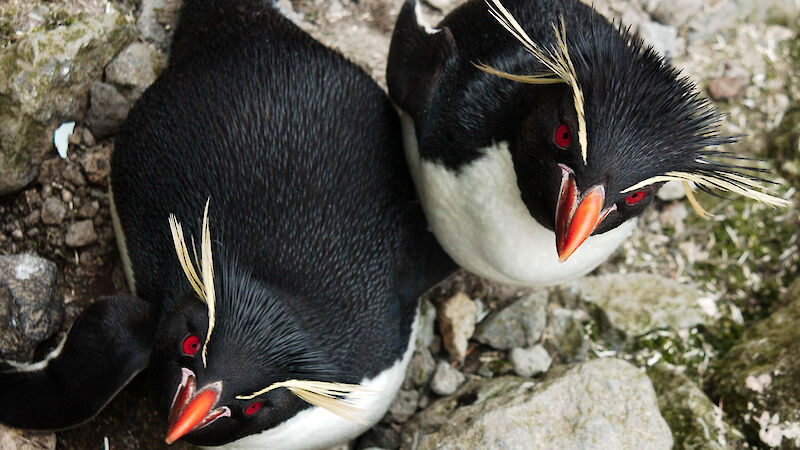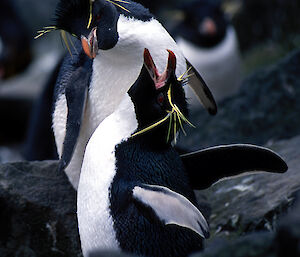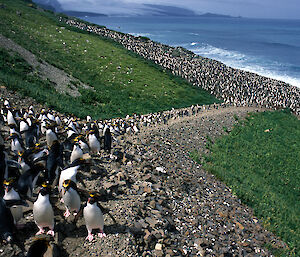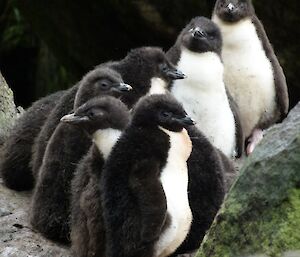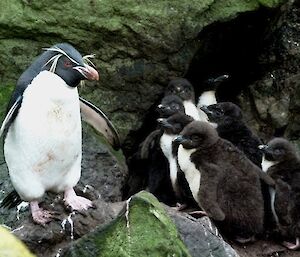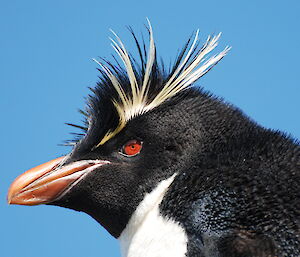Scientific name: Eudyptes chrysocome
Physical description and related species
Southern rockhopper penguins are the smallest of the crested penguins. They only weigh 2 kg to 3.8 kg.
Distribution and abundance
Southern rockhopper penguins have a circumpolar distribution. They are found on islands in the region of 46 to 54°S. The islands they occupy include Heard Island, the McDonald Islands and Macquarie Island.
Over the past few decades, populations have significantly decreased. The most seriously affected, were the colonies at the Falkland Islands (Malvinas). Although researchers are unsure what threats are predominantly driving the population declines, it appears that climate changes is playing a significant factor.
Conservation status: vulnerable
Breeding
The start of the breeding season depends upon where southern rockhopper penguins live. It can vary by as much as 6 weeks. There are also annual variations within the same colony. Females usually lay 2 eggs within 4 to 5 days of each other in November. Like other crested penguins, the first egg is smaller than the second one.
For a few days, both partners remain at the nest. Then the males depart and go to sea, returning 2 to 4 weeks later. The eggs are incubated for 32 to 34 days. Both eggs may survive and hatch.
Once the chicks hatch, the male guards them for about 3 weeks while the female feeds the chicks. Chicks are usually ready to leave the colony in mid-February (depending on when the breeding season started).
Adult penguins have to prepare for their annual moult. If food is plentiful, they moult early. If food is difficult to find, the penguins delay their moult. Generally, the last birds finish their moult in mid-May.
Diet and feeding
Southern rockhopper penguins hunt a variety of prey. Crustaceans and cephalopods appear particularly important. Generally, diet composition varies with location and season. On average, southern rockhoppers dive to 20 m or 30 m. One study has recorded a dive depth of 113 m.

